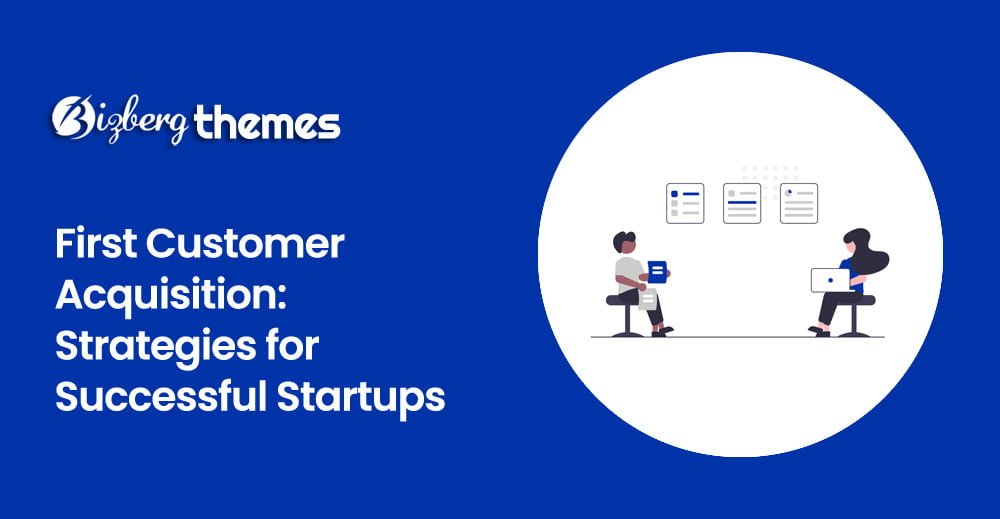
Getting your first customer is a pivotal moment for any startup. It signifies validation of your business idea and sets the stage for future growth. This article will provide you with a comprehensive guide on acquiring your first customer, outlining effective strategies and tactics to help you succeed.
1. The Importance of Acquiring Your First Customer
Acquiring your first customer is essential for several reasons. It helps generate revenue, validates your product or service, and establishes credibility in the market. Additionally, having a customer allows you to gather valuable feedback, refine your offerings, and attract further investment.
2. Understanding Your Target Audience
Before embarking on your customer acquisition journey, it’s crucial to understand your target audience. Identify their needs, preferences, and pain points. Conduct market research, analyze competitors, and create buyer personas to tailor your approach effectively.
3. Crafting an Irresistible Value Proposition
Develop a compelling value proposition that highlights the unique benefits your product or service offers. Clearly communicate how you solve your customers’ problems or fulfill their desires. Emphasize the value they’ll receive by choosing your startup.
4. Leveraging Personal and Professional Networks
Tap into your personal and professional networks to find potential customers. Spread the word about your startup, attend industry events, and engage with relevant communities. Leverage existing relationships to gain referrals and introductions to potential customers.
Outbound Link: LinkedIn
5. Utilizing Social Media Platforms
Establish a strong presence on social media platforms where your target audience is active. Share engaging content, interact with followers, and participate in relevant conversations. Leverage social media advertising to reach a wider audience and drive traffic to your website.
Outbound Link: Facebook
6. Building a Compelling Website
Create a professional and user-friendly website that showcases your offerings and tells your brand’s story. Optimize your website for search engines and ensure it is mobile-responsive. Provide clear contact information and compelling calls-to-action to encourage visitors to become customers.
Outbound Link: WordPress
7. Creating High-Quality Content
Develop valuable and informative content that resonates with your target audience. Publish blog posts, articles, and videos that address their pain points or provide solutions. Establish yourself as an industry expert and build trust with potential customers.
Outbound Link: Medium
8. Implementing Search Engine Optimization (SEO) Techniques
Optimize your website and content for search engines to improve your visibility and organic traffic. Conduct keyword research and incorporate relevant keywords into your website’s meta tags, headings, and content. Focus on providing valuable information to readers while adhering to SEO best practices.
Outbound Link: Yoast
9. Engaging in Email Marketing
Build an email list of interested prospects and communicate with them regularly through targeted email campaigns. Provide valuable content, updates, and exclusive offers to nurture relationships and convert subscribers into customers.
Outbound Link: Mailchimp
10. Offering Special Promotions and Discounts
Attract customers by offering special promotions, discounts, or limited-time offers. Create a sense of urgency to encourage potential customers to take action and make their first purchase.
Outbound Link: Shopify
11. Building Relationships through Networking Events
Participate in networking events, trade shows, and conferences related to your industry. Engage with industry professionals, potential customers, and partners. Build meaningful relationships that can lead to customer referrals and strategic collaborations.
Outbound Link: Eventbrite
12. Providing Exceptional Customer Service
Deliver exceptional customer service from the very beginning. Exceed customer expectations, address their concerns promptly, and go the extra mile to ensure their satisfaction. Positive experiences will lead to customer loyalty and positive word-of-mouth recommendations.
13. Encouraging Referrals and Word-of-Mouth Marketing
Implement referral programs that incentivize existing customers to refer your business to their network. Word-of-mouth marketing is powerful and can significantly contribute to acquiring new customers.
14. Tracking and Analyzing Customer Acquisition Efforts
Continuously monitor and analyze your customer acquisition efforts. Utilize analytics tools to track website traffic, conversion rates, and customer behavior. Make data-driven decisions to optimize your strategies and improve results.
15. Conclusion
Acquiring your first customer is a challenging yet exciting milestone for startups. By understanding your target audience, crafting a compelling value proposition, and implementing effective strategies such as leveraging personal networks, utilizing social media, and providing exceptional customer service, you can increase your chances of success.
FAQs (Frequently Asked Questions)
1. How long does it typically take to acquire the first customer for a startup? The time it takes to acquire the first customer varies depending on various factors such as industry, product complexity, and target market. It can range from a few weeks to several months.
2. Are there any low-cost customer acquisition strategies for startups with limited budgets? Yes, several low-cost customer acquisition strategies include leveraging social media, creating high-quality content, participating in online communities, and networking through industry events.
3. Is it necessary to offer discounts or promotions to attract the first customer? Offering discounts or promotions can be an effective way to entice the first customer and create a sense of urgency. However, it is not always necessary and depends on your specific business model and target market.
4. How important is customer feedback during the early stages of customer acquisition? Customer feedback is invaluable during the early stages of customer acquisition. It helps you refine your offerings, identify areas for improvement, and enhance the overall customer experience.
5. Should startups prioritize customer acquisition over customer retention? While customer acquisition is crucial for the growth of a startup, customer retention should also be a priority. Building long-term relationships with customers leads to repeat business, referrals, and positive word-of-mouth, contributing to sustainable growth.
